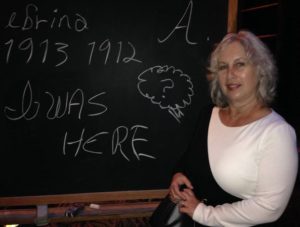Several years ago, I wrote articles about the craft of writing for Hippocampus Magazine. This is one of them, which came to mind this morning as I was reading a book about writing.
I sometimes wonder, as I’m reading, why a writer has chosen to highlight a particular incident in an essay or a memoir. What is it about the subject that beckons the writer? An unpleasant memory to be excised by finally letting a skeleton out of the closet? A mistake, a road not chosen, a turning point that made a difference over the course of a lifetime? Is the writer trying to preserve a time of innocence or unknowing? Does the writer pause to consider a moment after which nothing was ever the same?
Perhaps the writer has been stewing for years over a youthful indiscretion, hurt feelings, or a word spoken in anger—an apology left unsaid. And now, for some reason, the time is right to expose, correct, justify or confess.
Is the writer attempting to explain something that he or she has finally come to understand—a moment when love blossomed, or when a new world opened up? Or is it a story that will unburden the writer in the telling, granting freedom from the weight of it? Is it a story meant to clarify facts that have been misconstrued, overlooked or denied long enough?
When a writer chooses to tell a story, we—the readers—must be made to understand several things: Why this story? Why this writer? And why now?
Why, ultimately, is it important to write about the events we’ve lived long enough to tell? And will it make a difference when we do? What is the essential message we’re trying to get across by writing the stories of our lives, and who do we hope will receive and understand that message?
These questions were floating around in my mind after I saw a play called Underneath the Lintel recently. The playwright, Glen Berger, wrote a long note about the origin of the play in the program. I’m always interested to learn how plays come to be, what inspired the playwright to create this play, and how well the creative vision is translated onto the stage, so I eagerly read the note. And then I read it again. Berger’s words and the inspiration for this play have stayed with me for months.
He begins by stating what he describes as “three incontrovertible facts”:
First: “The universe contains well over 500,000,000,000 galaxies, with each galaxy containing over 1,000,000,000,000 stars, of which our vast, blazing, and life-bestowing sun…is one.”
Second: “The Earth is 4,600,000,000 years old, in which time, from the Precambrian Era to the present, a dizzying, terrifying number of inhabitants… have all struggled to live from one hour to the next….”
And the third fact: Life is finite— and the end is uncertain.
In short, Berger says, “the immensity of the universe, the incomprehensibly vast history of the Earth, and our inescapable mortality . . . loom over all of us like three paisley mastodons.” So he writes plays—despite these three looming, impossible-to-ignore facts that overwhelm and trivialize the details of daily life. He writes to keep himself “engaged with the Bewildering and Infinite.”
But let’s get back to us now—the people who write about our lives and the lives of others.
What does one life mean when placed in the context of human history? And what of human history, as it plays against the nearly impossible to imagine history of the universe? Add to this the knowledge that we only get one shot at living our lives— and we cannot know where certain words or decisions, coincidences, missed opportunities, or twists of fate will lead us. Every day we make small, seemingly insignificant decisions that can have unforeseen consequences. And every day we pass through the bewildering and the infinite when we stop on our way home to buy milk, when we kiss someone goodbye, when we notice a sunset.

In Underneath the Lintel, Berger created a lecture-within-a-play delivered by The Librarian, a man on a quest to find out who returned a library book that was 113 years overdue. His story is intertwined with a 700-year old myth about a man who cannot rest, who must endlessly travel the world while remaining anonymous and unseen.
While “The Wandering Jew” began as anti-Semitic folk tale, Berger appropriated the myth and the character to create a being who, although forbidden “to communicate his existence to his fellow man,” nevertheless manages to find ways to work around this by leaving hints and scraps behind, indicating his presence over time and across continents. At one point in his lecture, the Librarian places an old record on a turntable and we hear a scratchy recording, made in a booth at a long-ago World’s Fair, of a voice saying over and over again, “I was here.” And despite the sadness and misery he must have witnessed over his years of endless wandering, there is still time to find the good, to proceed, to persevere—and maybe even to dance. (Another inspiration for this play was klezmer music, dating back to the 1920s and before, which Berger describes as having a “certain ‘finding-joy-despite-all-the-evidence-to-the-contrary’ quality” to it.)
There is, Berger says, a “fundamental human need to affirm our own existence to each other and to the Heavens”: a fundamental human need to be heard, to be seen, to be known and remembered. Writers respond to these needs, which is why I am writing this essay and you are reading it—along with the collection of essays in this month’s issue. The answers to the why us, why this story, and why now questions come from our desire to continue as part of the ever-moving, ever-changing, bewildering, infinite, wondrous “dance” that began before us and will continue long after we are gone.
Every time we feel compelled to write our stories, we are sending the same message as Berger’s mythical character. And that message is always the same: “I was here.”

On stage, after the show

Risa, thanks for you comment and thanks for this. A beautiful piece and your words are endearing: The answers to the why us, why this story, and why now questions come from our desire to continue as part of the ever-moving, ever-changing, bewildering, infinite, wondrous “dance” that began before us and will continue long after we are gone.
Maybe we all need a piece of artwork in our homes to remind us I WAS HERE. Or maybe it’s the garden we planted, the child we raised, and especially THE GOOD THAT WE DID.
Beth, a belated thank you for your reply. I love this comment!